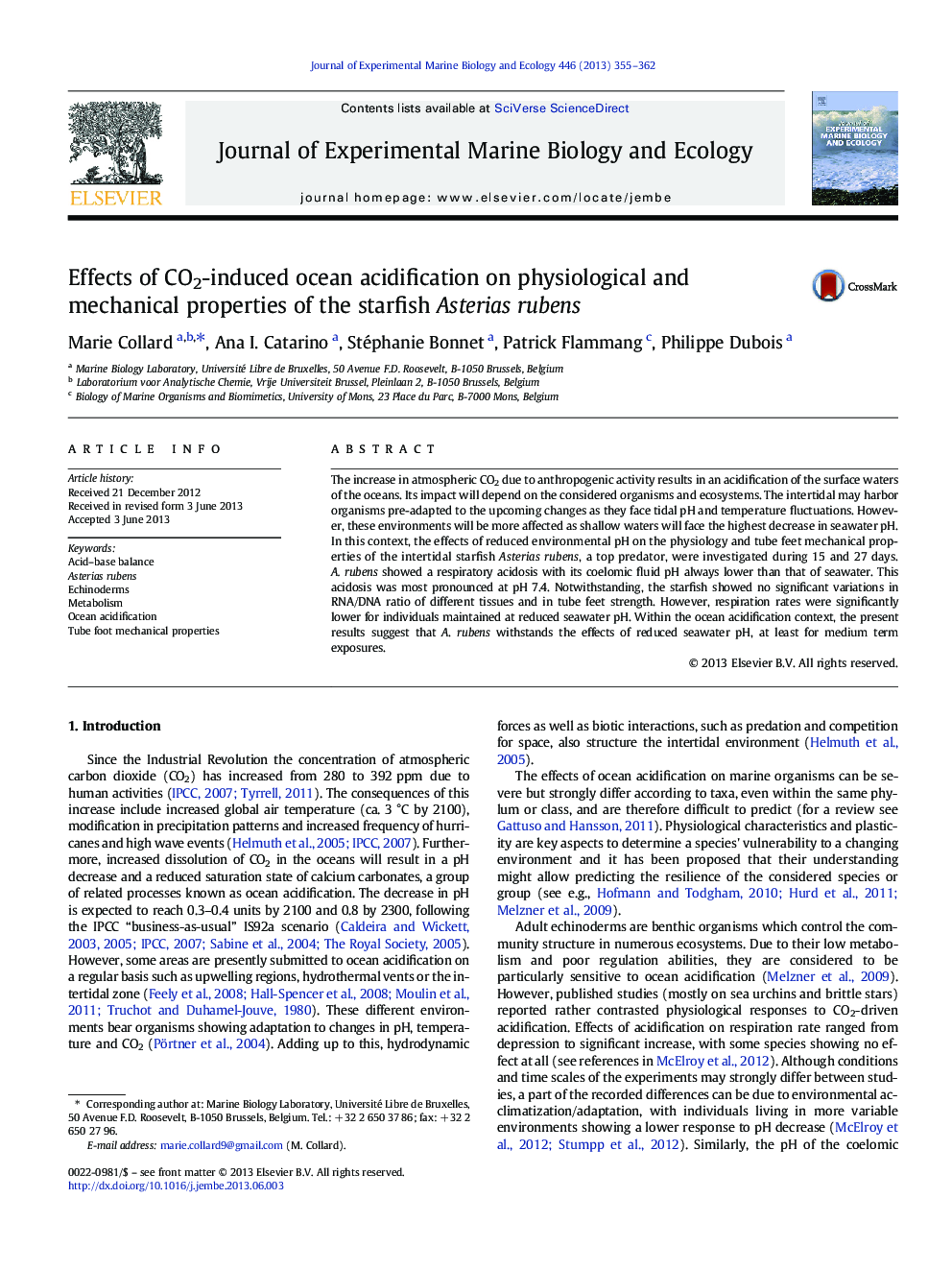| Article ID | Journal | Published Year | Pages | File Type |
|---|---|---|---|---|
| 4395742 | Journal of Experimental Marine Biology and Ecology | 2013 | 8 Pages |
•When exposed to reduced SW pH, Asterias rubens cannot compensate pHCF.•Metabolic depression after 27 days of exposure to pH 7.7 and 7.4•No impact of seawater pH on RNA/DNA ratio or tube feet mechanical properties.
The increase in atmospheric CO2 due to anthropogenic activity results in an acidification of the surface waters of the oceans. Its impact will depend on the considered organisms and ecosystems. The intertidal may harbor organisms pre-adapted to the upcoming changes as they face tidal pH and temperature fluctuations. However, these environments will be more affected as shallow waters will face the highest decrease in seawater pH. In this context, the effects of reduced environmental pH on the physiology and tube feet mechanical properties of the intertidal starfish Asterias rubens, a top predator, were investigated during 15 and 27 days. A. rubens showed a respiratory acidosis with its coelomic fluid pH always lower than that of seawater. This acidosis was most pronounced at pH 7.4. Notwithstanding, the starfish showed no significant variations in RNA/DNA ratio of different tissues and in tube feet strength. However, respiration rates were significantly lower for individuals maintained at reduced seawater pH. Within the ocean acidification context, the present results suggest that A. rubens withstands the effects of reduced seawater pH, at least for medium term exposures.
